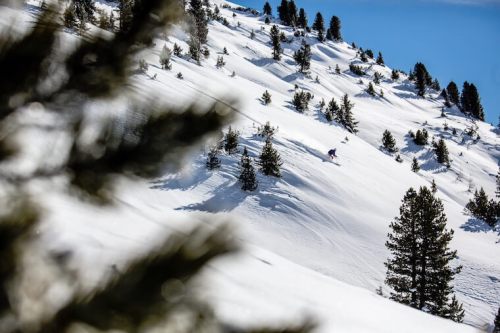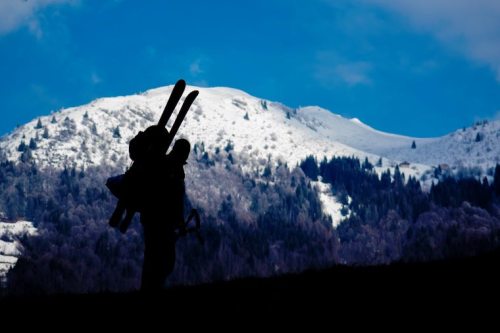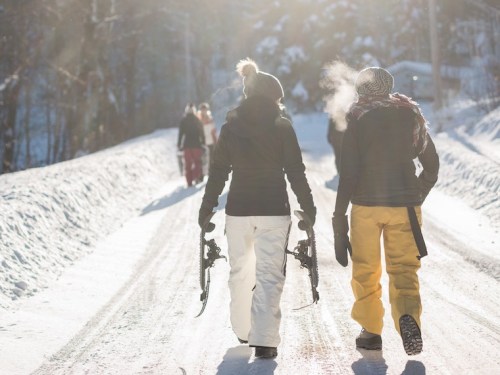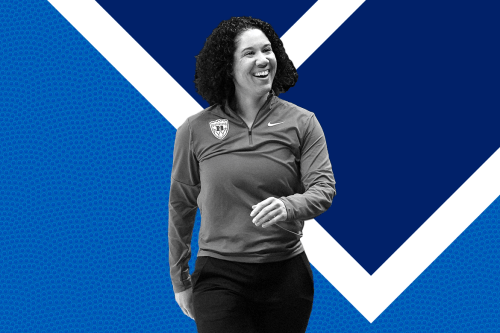I’ve always preferred active pursuits that don’t require a lot of fuss. Running, requiring a pair of sneakers and an open road, for instance. And I’ll take push-ups and pull-ups over racking weights or figuring out machines any day, which is why winter sports—with so much prep, gear, and technique involved (not to mention the process of mentally steeling myself for the cold)—didn’t really intrigue me. Until I started to see how much fun everyone I knew was having without me once the snow started to fall.
So, last season, I jumped at the chance to learn, during three days of lessons in Aspen, CO, at Buttermilk and Snowmass, mountains where reaching the top means witnessing beauty that takes your breath away. (It could also be the altitude.)
Here’s what I discovered: If you’re a fitness lover with a sense of adventure and don’t ski or snowboard, you may be missing out.
The experience delivers endorphins, the stress relief of being out in nature, and, once you start to figure it out, a serious sense of accomplishment. “There’s just such an incredible feeling of ‘Oh my goodness! I can do this!'” says Buttermilk’s ski school manager Georgie Bremner, who’s been a ski instructor for 22 years. Bonus: Learning a new physical skill in adulthood is good for your brain, too.
Of course, all of the scary (falling!) and intimidating (how do I walk in these boots?) parts come first.
So I got some expert tips from Bremner to help you hit the slopes for the first time this year like a pro. Read on for her expert advice.

1. Pick the right mountain
Most ski resorts have a beginner—or “bunny”—slope at the bottom of the mountain, which you’ll need to stay on for quite a while at first. But certain resorts, like Buttermilk, are better for beginners thanks to “gentle” terrain that includes long, wide slopes that stretch from the top of the mountain down, explains Bremner. I didn’t get why anyone liked skiing until I was able to get off the bunny slope and onto one of those trails, where I started to feel real movement and take in views.
Do some research and look for places known for terrain like that—on a trail map, it would mean lots of long trails marked “green,” for beginner. Bremner also suggests going to a mountain that isn’t crazy crowded at first. “You don’t want to have that feeling of someone buzzing by you, which can be really disconcerting,” she explains. It’s impossible to totally avoid, but if you can go on an off day your first time, it’ll help.

2. Get guidance on gear
Skiing requires a lot of (expensive) stuff, but your best bet is to borrow from friends and rent what you don’t have the first time, lest you decided it’s not for you. Bremner suggests heading to the ski shop at the mountain or a specialty store if there’s one near you to talk to an expert about what you really need, based on where you’re going.
You may want to get some base layers, for instance. On the East Coast you’ll often need to prepare for freezing temps, while out West, I found myself shedding layers constantly because I was sweating in the sun. One big tip: “You shouldn’t wear cotton next to your skin when you’re up in the mountains because it can make you very cold,” Bremner says (opt for something way more sweat-wicking and quick-drying), and long, warm socks are a must.
Renting (rather than buying) your boots and skis (or snowboard) will come with a bonus: they’ll be able to give you equipment specifically for a beginner, which will make it easier to learn.

3. Take a lesson (and not just from your ski-obsessed friend)
“If the challenge is too great too early, that’s when you can really get put off the sport,” Bremner says. Like, when your lifelong skier friend says, “You’ll be fine!” and proceeds to take you on a slope that looks terrifying.
When I first started, I was struggling with the simplest things ever (like how to even clip my foot into a ski), and I never would have gotten comfortable without a patient, encouraging instructor showing me the slopes. Lessons aren’t cheap, of course, but group lessons are more affordable, and there’s a nice camaraderie in having others around you at your same level.

4. If you can’t take a lesson, learn these things first
If you’re skipping a lesson for whatever reason, I highly recommend having a friend show you how to do these specific things on flat ground and/or the bunny slope before attempting any real runs: proper stance (on skis, for instance, you lean your weight slightly forward, which can feel counter-intuitive), how to get on and off the lift, how to turn (or you’ll be barreling down the mountain at top speed), and, of course, how to stop (the most important!).

5. Give it three days
Look, I said I was surprised by how much I liked it, but the first day was pretty frustrating. Bremner calls it “hard fun,” and says a single attempt is not enough time to make a decision on whether you’re a winter sports person or not. “Everyone needs to commit to it for three days,” she says. “After those three days, you’ll be able to judge whether you like it or not.”
Just remember: While the 5-year-olds flying past you may make you feel like a moron, they don’t get to take part in après ski fun, AKA hot toddies by the fire—which is basically the best part.
Other adventurous active pursuits you could take on: How about bouldering at a climbing gym? Or this super hard workout move you’ve probably never tried?
Sign Up for Our Daily Newsletter
Get all the latest in wellness, trends, food, fitness, beauty, and more delivered right to your inbox.
Got it, you've been added to our email list.











